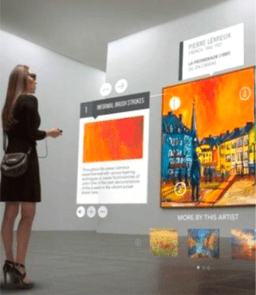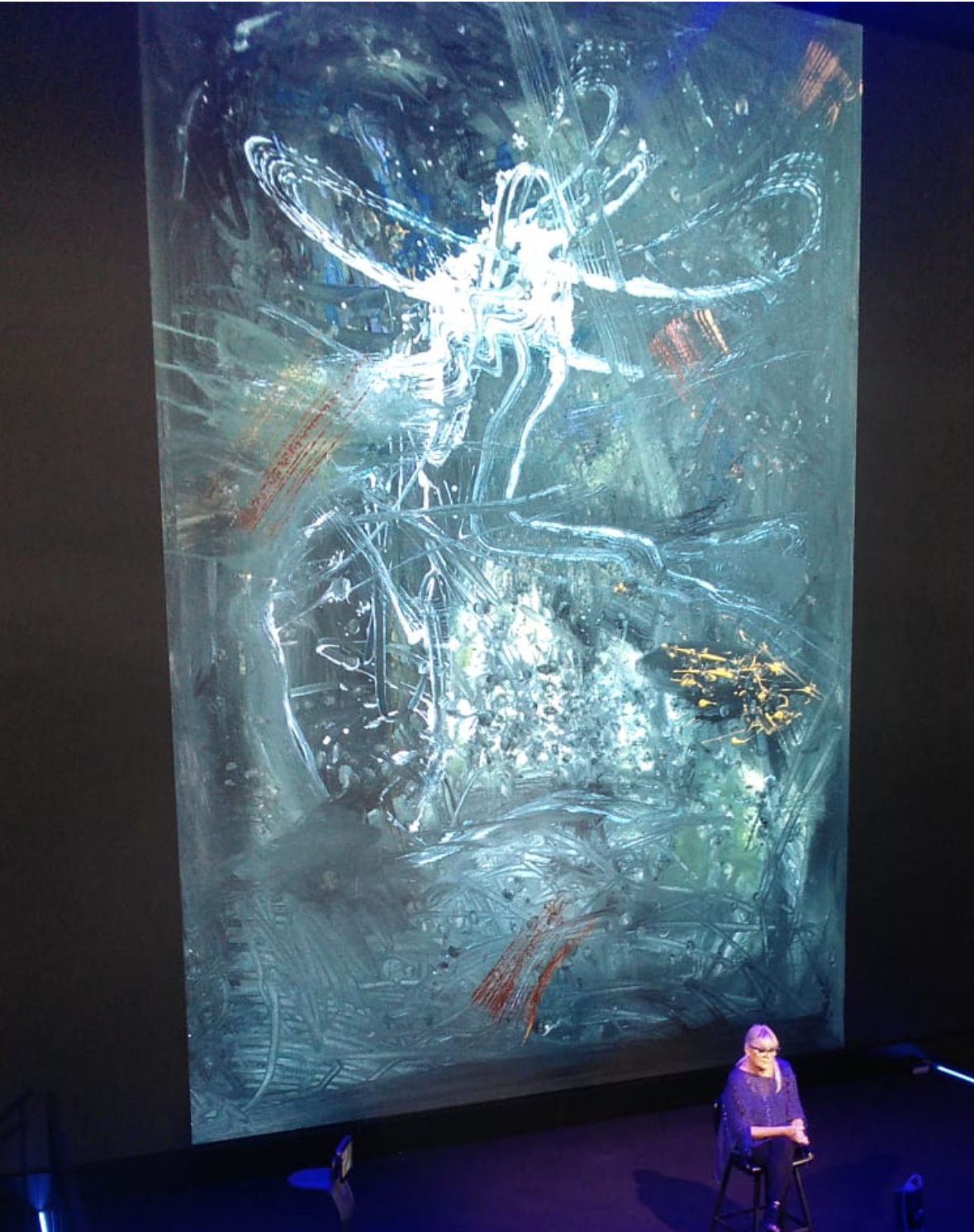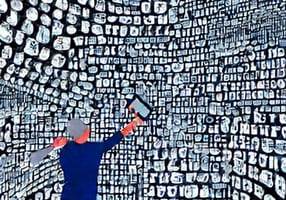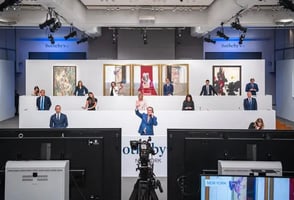Reprinted from Jackson Hole Economics, 21 Aug 2023
Scaling the Art World: Why We Need 5,000 Artists for a Thriving Industry
#2 in a Series on the Art of Scalability, Transforming the Future of the Art World
Embracing Innovation and Empowering Artists for a Thriving Artistic Ecosystem
The art world is stuck in a dilemma. Most global sales – 90 percent by industry estimates – come from about 500 artists, limiting active buyers to the ultra-rich and elite institutions. At the same time, in this new era of connectivity, democratization and exposure to high profile sales the appetite for buying art has grown. Yet many potential buyers or investors are uncomfortable with the limited access and insider nature of the traditional art market.
Growth would be warmly welcomed by a larger and more robust community of investors and collectors, provided that it is accompanied by enhanced transparency, security, and efficiency.
What steps can be taken to achieve a significant expansion of the art market, reaching a scale where over 5,000 artists drive the majority of sales?  According to the chairman of one of the major auction houses, the market focuses on so few artists to minimize research and due diligence expenses. Auction houses and major gallerists are by nature conservative: money spent to authenticate a multi-million dollar piece by a well known artist in the marketplace can be recouped, but similar expenses for less well known artists may not be justified. The challenge therefore is to reduce the expense of authenticating works in order to increase the overall supply, making the art industry scalable. Only through the disruptive power of technology could this sort of growth be possible.
According to the chairman of one of the major auction houses, the market focuses on so few artists to minimize research and due diligence expenses. Auction houses and major gallerists are by nature conservative: money spent to authenticate a multi-million dollar piece by a well known artist in the marketplace can be recouped, but similar expenses for less well known artists may not be justified. The challenge therefore is to reduce the expense of authenticating works in order to increase the overall supply, making the art industry scalable. Only through the disruptive power of technology could this sort of growth be possible.
Luckily for the art market, the technologies to make this possible already exist and most are accessible through our smartphones.
Embracing the Power of Technology
Technology has become a powerful catalyst for change across almost all industries, and art is no exception. The art market can harness technology’s potential in our view in two ways:
1) Leveraging verified data platforms to build trust and transparency.
2) Providing artists with online and mobile visualization tools to allow them to showcase their work to a larger global audience.
By embracing technology, the art world can expand exponentially, breaking down geographic, political and economic barriers to connect artists with collectors in new ways.
Rethinking the Evaluation Process
Traditionally, the art market has relied on subjective evaluations and the opinions of a few influential gatekeepers. However, by embracing a more inclusive and diverse approach, we can create a system that values a wider range of artistic voices. Transparent and democratic evaluation processes, involving curators, critics, other artists (including from other artistic mediums) and the general public can bring talented artists that have previously been overlooked and marginalized to the marketplace.
Virtual Reality and Augmented Reality An expanded art market could benefit greatly from advancements in virtual reality (VR) and augmented reality (AR) technologies, just as the music industry was transformed in the 1980’s by the introduction of music videos. VR exhibitions can provide immersive experiences, allowing viewers to engage with art not just from their homes (walk through The Louvre in your living room!), but also from their favorite galleries and museums where art from anywhere in the world and works that are not publicly accessible (in private collections or stored in archives) can be “displayed.” AR applications provide access to art and create great storytelling in public spaces, transforming cities into open-air galleries and art deserts into cultural meccas. By embracing these technologies, we can expand the reach and impact of art, attracting a broader audience and fostering a greater love of and connection to art.
An expanded art market could benefit greatly from advancements in virtual reality (VR) and augmented reality (AR) technologies, just as the music industry was transformed in the 1980’s by the introduction of music videos. VR exhibitions can provide immersive experiences, allowing viewers to engage with art not just from their homes (walk through The Louvre in your living room!), but also from their favorite galleries and museums where art from anywhere in the world and works that are not publicly accessible (in private collections or stored in archives) can be “displayed.” AR applications provide access to art and create great storytelling in public spaces, transforming cities into open-air galleries and art deserts into cultural meccas. By embracing these technologies, we can expand the reach and impact of art, attracting a broader audience and fostering a greater love of and connection to art.
The Art World of the Future
The art market has the potential to expand exponentially if it embraces innovation,fosters inclusivity, and leverages the exciting advances the new technologies offer. By harnessing the power of technology, reimagining the evaluation processes, embracing augmented and virtual reality, we can create a future where art is accessible to all and attracts the diverse voices of our society. In order to grow in terms of relevance and profitability, the art market needs to scale up, to include more buyers and collectors, as well as more artists. A market many times larger and more egalitarian than the current one will pave the way for a new Renaissance in the art world and allow fine art to reclaim its place atop the arts hierarchy. Will we summon the courage and tenacity to bring collecting art into the twenty-first century? The opportunity awaits.

About This Series
Welcome to our thought leadership series on technology and its crucial role in creating a safer and larger next generation art world. We explore how technology impacts safety, transparency, accessibility, and engagement in the art industry. Join us as we delve into the importance of scalable technology solutions in fostering trust, enabling broader participation, and unlocking new possibilities for the art market. Together, let's forge a path toward a thriving, inclusive, and transformative art world.
#Scalability #ArtWorldTransformation #NextGenerationArt #ArtData #TrustAndVerification #ArtIndustry #ArtTechnology #ArtMarket #ArtTransparency #ArtEngagement #ArtSafety #ArtAccessibility #ArtInnovation #ArtRevolution #ArtThoughtLeadership #ArtCommunity #ArtInsights #ArtEvolution #ArtFuture #ArtWorldChange #ArtWorldScaling #InclusiveArtCommunity #DiverseArtVoices #DigitalArtRevolution #BreakingBarriers #ArtisticInnovation #ArtMarketDemocratization #ArtTechAdvancements #TransparentEvaluation #EquitableArtEcosystem #LogisticsSolutions #AffordableShipping #ReducingArtFees #VRandARArtExperiences #ArtEducationMatters #CulturalInitiatives #ArtForAll #BridgingGaps #PhilanthropyInArt #ArtisticRenaissance #FutureOfArt





